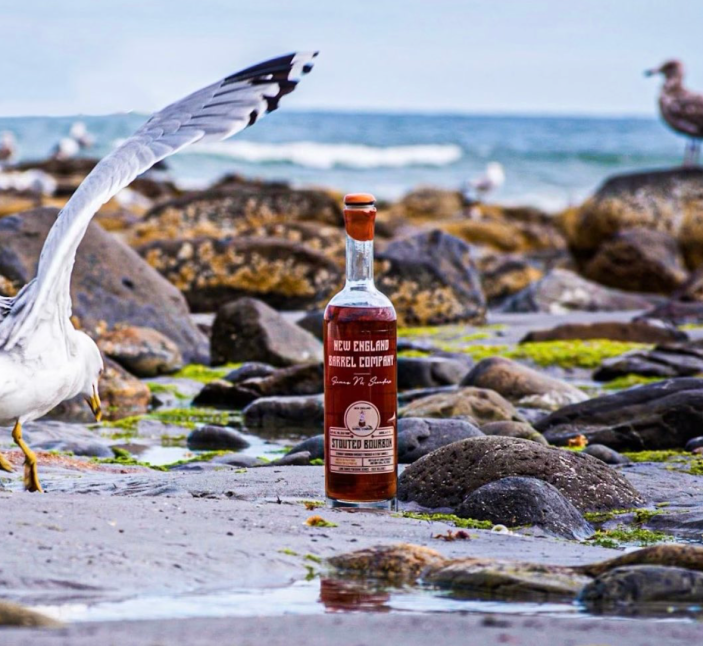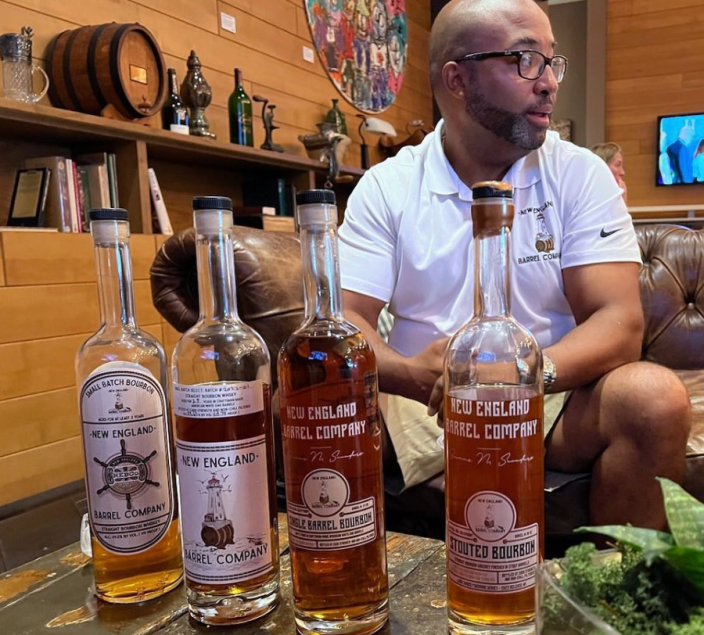When he first founded New England Barrel Company, James Saunders had no idea that the project, which began as an after-hours gig, would soon grow to become the region’s biggest whiskey brand. Over the span of four years, New England Barrel Company has risen to prominence, winning major awards and becoming the whiskey of choice throughout the six states representing its home base. The credit for that rapid ascent belongs to the visionary entrepreneur behind the brand, who began creating a template for diversifying the alcohol business after he became fed up with what he was seeing at local liquor stores in his backyard.
“What I was seeing take place really bothered me,” said James, “in 2017, I saw prices starting to tick up, and that continued at a steady pace for three years. I realized that the consumer didn’t have an opportunity to enjoy accessible whiskey for under $60 anymore. That’s when I decided I wanted to bring sanity back to the American whiskey space.”
James launched New England Barrel Company in October 2020, and despite the difficulty of launching a business in the heart of a pandemic, he has seen his company flourish. Winning awards from industry-leading tasting competitions like the San Francisco Wine And Spirits Competition has helped raise the brand’s profile among discerning whiskey enthusiasts, and strategic investment from the Diageo-backed incubator program, Pronghorn, has enabled New England Barrel Company to extend its reach outside of its home market.

“I wanted to work with (Pronghorn) because I know it’s not enough to find money for investment; you have to find smart money. For example, I didn’t know I needed to be a geopolitical expert to make whiskey, but having Pronghorn involved, I don’t have to be. They can marshall resources to help me overcome obstacles with the global supply chain for obtaining things like glass for bottles.”
New England has a rich culture of distilled spirits that stretches back to the time of George Washington when rum was all the rage, and the influx of imported molasses into Boston and Providence turned the region into our nascent nation’s biggest rum exporter. Since that time, however, its distilling success has seen a downturn due to shifting tastes, which saw rum fall out of favor as whiskey’s popularity grew. Today, New England is on the rebound, with just north of 30 distilleries calling the area home, and none of them are as nationally recognized as New England Barrel Company.
Still, even as New England has been rebuilding its distilling culture more recently, Covid presented a new set of challenges that caused several distillers to call it quits. James explains,
“We’ve seen a number of distilleries close, which is sad for the communities they’re in. I wanted to create a brand that would put New England on the map because this is not just about me. We’ve got some amazing small distilleries that need to receive recognition as well, and if my success can shine a light on them, that’s something we aim to spearhead.”
By conservative estimates, the U.S. spirits business is a nearly $40 billion industry, and as one of the key pioneers putting a new face on the industry, James Saunders plans to use his influence to create a rising tide that lifts all boats. Starting in New England, he envisions collaborations on the brand level as well as a craft-centric whiskey festival to showcase the spirits that he and his neighboring distilleries are producing.
“Pulling those disparate communities together and paying these things forward is of the utmost importance to me. Raising awareness is just a start.” The idea is that by working together to pull in consumers as well as experts from across the country, New England will once again be one of America’s preeminent alcohol-producing regions.

New England Barrel Company recently received its Distilled Spirits Plant number from the TTB, with licensing set to arrive this fall. That will allow the brand to officially begin distilling spirits on their home turf (up to this point, they’ve been contract distilling at another facility) in Reading, Massachusetts. Having learned from his experience distilling in Kentucky, which he likens to being a guest chef in someone else’s kitchen, James Saunders aims to fully restore New England’s distilling tradition by controlling the entirety of his production process and setting aside a portion of their production capacity to help produce spirits for other upstart companies.
Regarding the keys to his success in a space that has historically excluded BIPOC (Black, Indigenous, and People of Color) business owners, James credits his willingness to take such a community-minded approach. Despite its yawning embrace of inclusivity in positions of power, the American whiskey industry is more ready than ever to accept new folks into the fold. In fact, it has to be if the industry’s historic growth will continue.
Thanks to strategic partnerships like the Advancement Initiative established by Uncle Nearest and Jack Daniel’s and the investment from companies like Pronghorn into New England Barrel Company, the alcohol industry has seen an uptick in successful black-owned businesses and their achievements are enriching the category as a whole. Consumers are eager to support these businesses because they know as well as anyone that having diversity in the space only means a wider variety of affordable, high-quality options on the shelf, and that’s the exact problem James Saunders set out to fix.
“The whiskey industry works like this,” James concluded, “you work hard to make your whiskey good, you engage with your consumers, you expand who your consumer is, and if they like your whiskey, they buy it. If they don’t like your whiskey, you don’t survive.”








